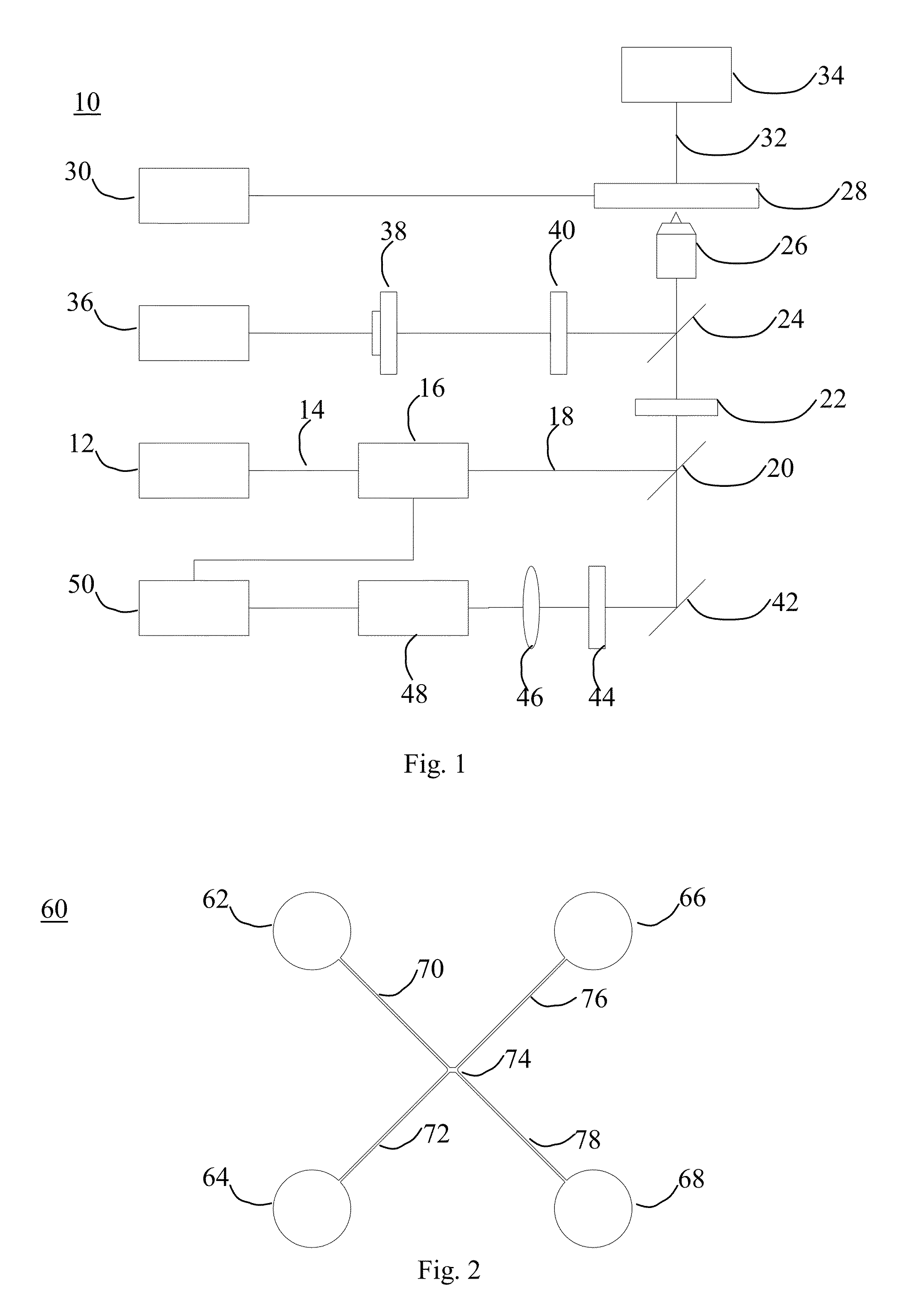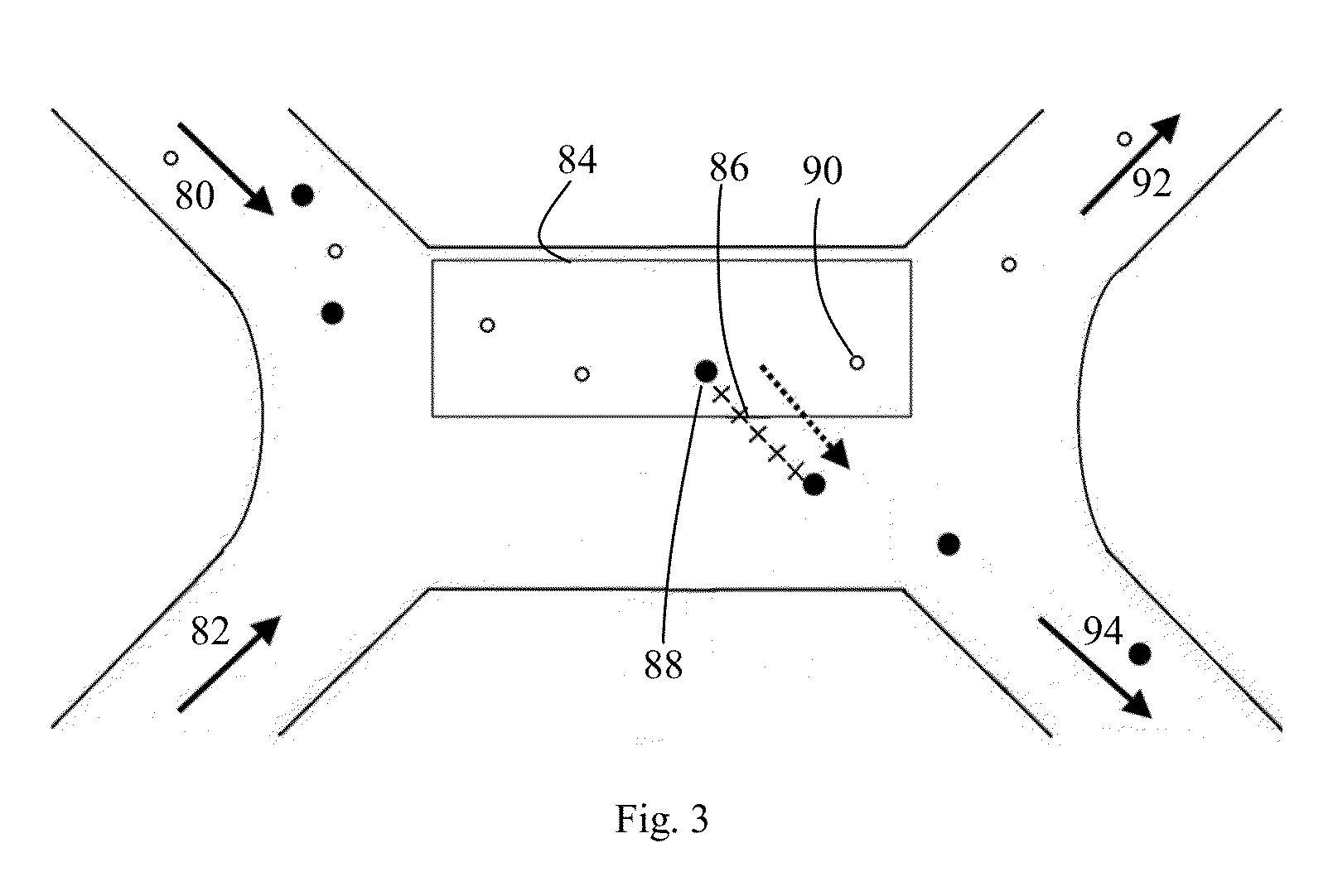Methods and means for manipulating particles
a particle and particle technology, applied in the field of particle manipulation methods and means, can solve the problems of inability to realize real-time particle separation in continuous particle flow, limited conventional systems, and inability to sort multiple particles
- Summary
- Abstract
- Description
- Claims
- Application Information
AI Technical Summary
Benefits of technology
Problems solved by technology
Method used
Image
Examples
examples
[0061]Experiments were conducted to demonstrate the effectiveness of the aforementioned methodology and are described and discussed as follows.
[0062]FIG. 10 shows a series of photographs of isolation of yeast cells (with a diameter of 5-8 μm) from a sample containing and mixed with micro-beads (with a diameter of 2 μm). The yeast cells were completely mixed with the micro-beads at a ratio of 1:1, and then diluted to an acceptable concentration. In this experiment, the yeast cells were defined as the target particles and were to be sorted and collected in the collection reservoir. When the micro-bead moved with the flow of the sample and passed through the ROI, they were identified as the non-targeted particles, and they flowed into the waste channel with the sample flow, as shown in FIGS. 10a-b or more specifically the arrow in FIG. 10b. When the yeast cell passed through the ROI, it was recognized by the system as the target particle and accordingly was trapped, dragged and departe...
PUM
| Property | Measurement | Unit |
|---|---|---|
| wavelength | aaaaa | aaaaa |
| temperature | aaaaa | aaaaa |
| diameter | aaaaa | aaaaa |
Abstract
Description
Claims
Application Information
 Login to View More
Login to View More - R&D
- Intellectual Property
- Life Sciences
- Materials
- Tech Scout
- Unparalleled Data Quality
- Higher Quality Content
- 60% Fewer Hallucinations
Browse by: Latest US Patents, China's latest patents, Technical Efficacy Thesaurus, Application Domain, Technology Topic, Popular Technical Reports.
© 2025 PatSnap. All rights reserved.Legal|Privacy policy|Modern Slavery Act Transparency Statement|Sitemap|About US| Contact US: help@patsnap.com



